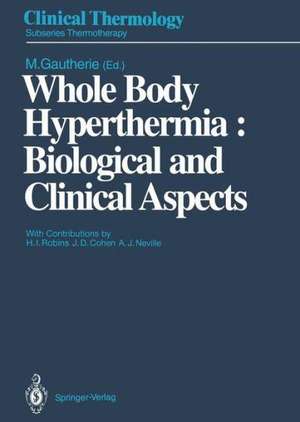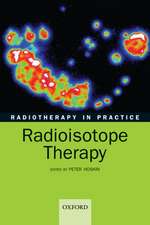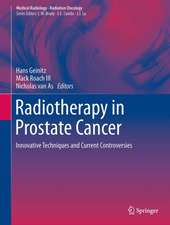Whole Body Hyperthermia: Biological and Clinical Aspects: Clinical Thermology
H.I. Robins Editat de Michel Gautherie J. D. Cohen, A.J. Nevilleen Limba Engleză Paperback – 25 ian 2012
Preț: 335.69 lei
Preț vechi: 353.36 lei
-5% Nou
Puncte Express: 504
Preț estimativ în valută:
64.24€ • 67.20$ • 53.36£
64.24€ • 67.20$ • 53.36£
Carte tipărită la comandă
Livrare economică 29 martie-04 aprilie
Preluare comenzi: 021 569.72.76
Specificații
ISBN-13: 9783642845987
ISBN-10: 3642845983
Pagini: 96
Ilustrații: X, 84 p. 1 illus.
Dimensiuni: 193 x 270 x 5 mm
Ediția:Softcover reprint of the original 1st ed. 1992
Editura: Springer Berlin, Heidelberg
Colecția Springer
Seriile Clinical Thermology, Thermotherapy
Locul publicării:Berlin, Heidelberg, Germany
ISBN-10: 3642845983
Pagini: 96
Ilustrații: X, 84 p. 1 illus.
Dimensiuni: 193 x 270 x 5 mm
Ediția:Softcover reprint of the original 1st ed. 1992
Editura: Springer Berlin, Heidelberg
Colecția Springer
Seriile Clinical Thermology, Thermotherapy
Locul publicării:Berlin, Heidelberg, Germany
Public țintă
ResearchCuprins
1 Introduction.- 1.1 Background.- 1.2 Systemic versus Local and Regional Hyperthermia.- 1.3 Conceptual Approaches to the Therapeutic Use of WBH.- 1.4 Summary.- 2 Hyperthermia and the Immune System.- 2.1 Introduction.- 2.2 In Vitro Studies of Hyperthermia and Immune Effector Cells.- 2.3 In Vivo Studies: The Abscopal Response and Metastasis.- 2.4 Clinical Hyperthermia and the Abscopal Response.- 2.5 Clinical WBH and the Immune Response.- 2.6 Conclusions.- 3 WBH and Ionizing Irradiation.- 3.1 Background.- 3.2 Potential Advantages of WBH Compared to Local Hyperthermia.- 3.3 The Importance of Treatment Temperatures Used in Preclinical Studies.- 3.4 Possibly Controllable Clinical Treatment Variables.- 3.5 Clinical Investigations Combining WBH and Ionizing Irradiation.- 3.6 Summary.- 4 WBH and Chemotherapy.- 4.1 Introduction.- 4.2 Potential Mechanisms of Thermal Chemosensitization.- 4.3 Factors Which May Modify Thermal Chemosensitization.- 4.4 Therapeutic Index.- 4.5 Probable Thermal Sensitizing Agents.- 4.6 Future Directions for Preclinical Research.- 4.7 Clinical WBH Studies.- 5 Clinical and Biophysical Aspects of Systemic Hyperthermia.- 5.1 Thermal Regulation and WBH Methodologies.- 5.2 Monitoring Body Site Temperature During WBH.- 5.3 Cardiorespiratory Effects of WBH.- 5.4 Biochemical Effects of WBH.- 5.5 Hematological Changes.- 5.6 Neurological Sequelae.- 5.7 Endocrine Function and WBH.- 5.8 Gastrointestinal Toxicity.- 5.9 Miscellaneous Toxicities.- 6 WBH Animal Studies.- 6.1 Introduction.- 6.2 Large Animals.- 6.3 Murine Models.- 6.4 Special Considerations.- 7 Special Considerations for the Future.- 7.1 Nononcological Considerations.- 7.2 Implications of WBH Research for General Medical Practice.- 7.3 Systemic Hyperthermia: Summary Reflections Regarding Neoplastic Disease.- References.


















